 There’s been big changes to fixed mortgage rates in the last 24 hours. As a result of this and the BoC announcement, mortgage professionals are probably getting more calls today than they have in weeks.
There’s been big changes to fixed mortgage rates in the last 24 hours. As a result of this and the BoC announcement, mortgage professionals are probably getting more calls today than they have in weeks.
Mortgagors and mortgage shoppers alike are anxious to know: “What now?” “When should I lock in?” “Where is the bottom in rates?”
The latter is the most common question we seem to be getting. In answering it, we’re no better off than anyone else at predicting where rates will go next. Almost anything seems possible in the credit market these days. We’ve seen U.S. treasuries trade at negative yields and Japan cut their policy rate to 0.1%.
Despite this and the outside possibility of Canada’s overnight rate going to 0% (this is not a prediction), we feel safe in saying that prime rate and fixed rates are not destined for anywhere near 0%, or 1%.
Banks have already shown hesitancy to lower prime and funding cost are still above normal. Therefore, a 0% overnight rate might bring prime down maybe 0.50% to 1.00% more, tops (as a very rough guess). Most economists seem to predict 1/2% more max.
Whatever the case, consider your probabilities of success by basing an interest rate strategy on the “hope” that rates fall further. If billion dollar bond fund managers can’t consistently predict turning points in rates, what chance do normal folks have?
____________________________________________________
Sidebar: In case anyone’s interested, here’s an empirical study of how bond fund managers do against their benchmarks. Quote from the study: “Among fixed income funds, indices outperformed twelve of thirteen categories over a five-year horizon.” It’s tough to predict rates!
(Thanks to Seeking Alpha for the link on this study.)




It seems to me (but I’d love to hear other comments) that a decent rule of thumb for locking-in would be when the current discounted 5-year fixed rate is equal to or lower than the average discounted VR over the last 10-years.
Looking at the 10-year history here, it seems that we may be at or close to, that magic point (10 year VR average=~4.75, current 5-year fixed rate = ?).
According to those charts, the 5-year fixed rate has only ever dropped below the 10-year VR average (4.75) on three occasions over the last 10 years, and two of those occasions were mighty short windows (around May-July 2003, Jan-May 2004 & all of 2005).
Of course, past performance is not a perfect predictor of future performance, but that’s why it is just a rule of thumb.
Nice explanation Bob, I think you get it right on the head with that one. The fact of the matter is, is you can go fixed under 4.5%m that’s just a good deal all around, and seems to be the way to go.
I am looking for an opinion… A year and a half ago we purchased our house and signed up for a fixed rate at 5.4% for 5 years. With interest rates the way they are we are thinking of transferring our mortgage and paying the penalty to get a variable rate mortgage and then locking in while it is low. When I did the math we would have paid 30 000 more down on the principal including the penalty than if we stay with what we have got. Am I missing something? That seems like alot of money to save, can it go wrong?
You guys continue to put out fantastic articles. Thank you for the great info here.
Heather what you want to do sounds feasible but you should probably talk to a professional for a 2nd opinion. A lot depends on how big the penalty is.
Heather, did you check mortgage calculators online, google “canadian mortgage calculators” and you can put 2 different rates and and see the full schedule and it tell you exactly how much will you save.